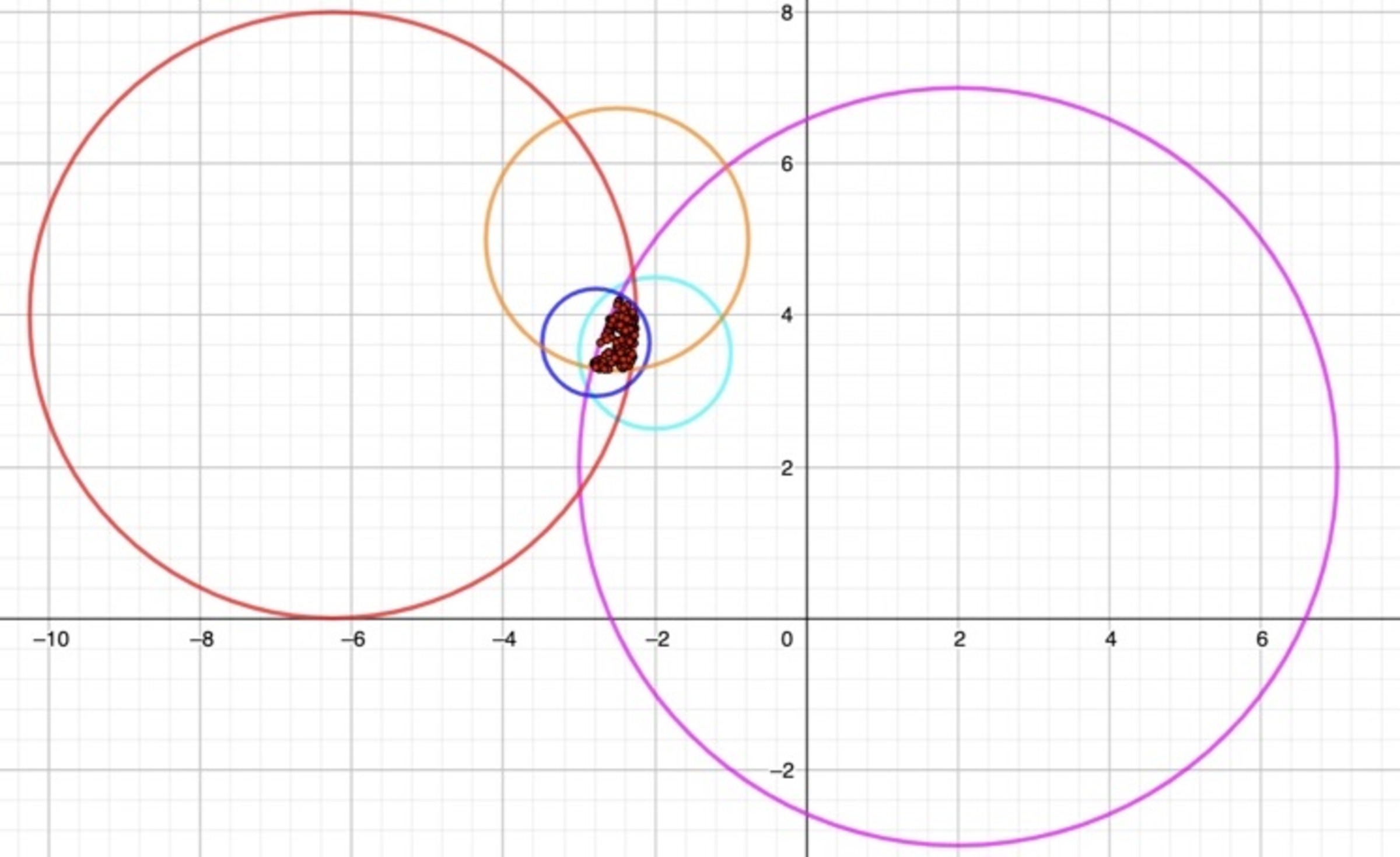Monte-Carlo method to find the intersecting area of 5 circles.
Computer Science
Level
pending
 Use the Monte-Carlo method to find the area of 5 intersecting circle
Use the Monte-Carlo method to find the area of 5 intersecting circle
| Circle | Center | RADIUS-SQUARED |
| 1 | (-2 , 3.5) | 1.00 |
| 2 | (2.00 , 2.00) | 25.00 |
| 3 | (-6.25 , 4.00) | 16.00 |
| 4 | (-2.87 , 3.64) | .50 |
| 5 | (-2.50 , 5.00) | 3.00 |
The answer is 0.363.
This section requires Javascript.
You are seeing this because something didn't load right. We suggest you, (a) try
refreshing the page, (b) enabling javascript if it is disabled on your browser and,
finally, (c)
loading the
non-javascript version of this page
. We're sorry about the hassle.